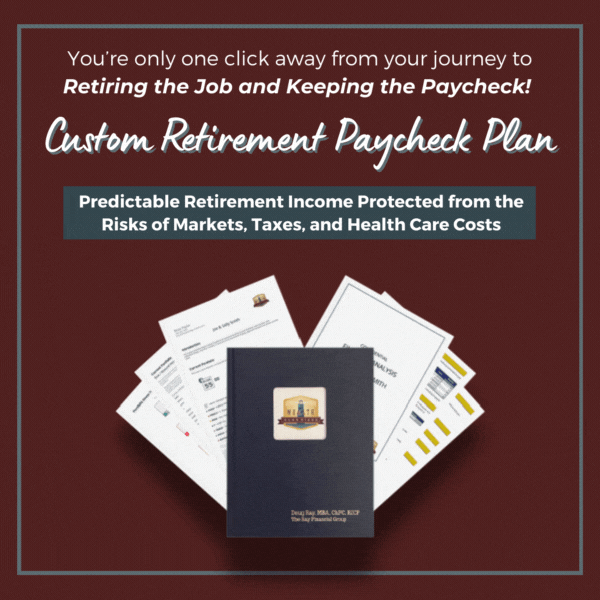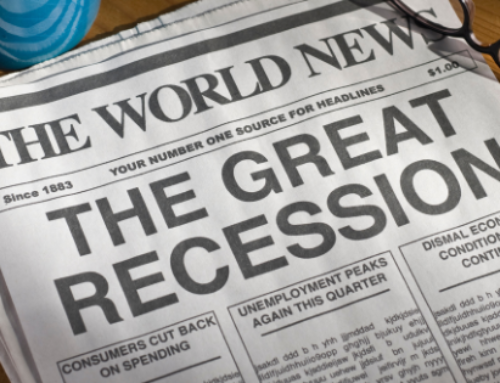 Let’s assume you’re ahead of your peers. You’ve saved, invested, and paid down debts. Maybe you’ve even met with a financial professional to examine your retirement income options. But if you’re using traditional strategies, you still might find yourself behind the eight ball in retirement.
Let’s assume you’re ahead of your peers. You’ve saved, invested, and paid down debts. Maybe you’ve even met with a financial professional to examine your retirement income options. But if you’re using traditional strategies, you still might find yourself behind the eight ball in retirement.
Preparing for your financial future requires considering things that aren’t necessarily within your control. It’s easy to select your target retirement date or to budget what you’ll need for monthly income, but projecting portfolio returns, life expectancy, taxes, inflation, and health care needs amounts to strategic guesswork. These assumptions are risky business; even a small margin of error may throw your plan off course. In my experience, the one factor that generates the most problems is the assumed average rate of return on your investments.
The Flaw of Averages
Mark Twain once quipped that there are three kinds of lies: lies, d***ed lies and statistics. In other words, numbers can tell just about any story you’d like depending on the interpretation. Let’s look at an example.
Suppose your retirement portfolio takes a hit when the market drops like it did in 2008. Your account drops 40% — nearly half your life savings. But you don’t panic; reminding yourself that you’re in it for the long haul, you stay the course. The following year your patience is rewarded, and your account bounces back 40%. Phew — at least we broke even, right?
Wrong! Let’s assume you invested $1 million in that portfolio. After the first year’s loss, your balance would have dropped to $600,000. The subsequent rally helps you recover, but a 40% return only gets you back to $840,000. Your average rate of return over the time period may be zero, but the actual rate of return is minus 16%!
This difference matters. Unfortunately, many financial plans paint a false picture in relying on average rates of return. It might be nice to imagine earning smooth, steady rates of return in retirement, but we know the market is anything but consistent. A prudent plan should be mindful of market volatility.
Experience has taught me that your retirement strategy is most sensitive to market swings during the five years before and after your target retirement date. Your savings are at their pinnacle and thus more vulnerable to a market correction. What choice did those hoping to retire have in 2008? They might have chosen to delay retirement, waiting three to five years until their portfolios recuperated. Alternatively, they may have pressed forward with retirement, at the expense of accepting a lower standard of living.
Incurring losses around your target retirement date bears significant consequences. Despite this, many people are stubbornly or unwittingly counting on “age-appropriate” mixes of stocks and bonds to mitigate this risk. But these portfolio mixes, designed to deliver an average target rate of return over time, can fail to support your plan if the market ignores your projection and delivers an actual negative return when timing is critical.
Keeping It Real
This may be puzzling to seasoned investors. Why worry about market oscillation? Patience has always been regarded as the best tool to offset market volatility. We’re told that it’s panicking and selling at the wrong time that typically gets people into trouble. As long as you are patient, you should be able to keep retirement on track, right?
Not quite. Whether market volatility is of consequence is almost exclusively dependent on timing. When you’re working, a market drop hurts. But you don’t need that money; you’ve got a paycheck. You can afford to ride things out. And continued systematic contributions only aid your recovery since, in theory, you’re buying low — a surefire way to recover.
When you’re near or beyond retirement age, the story changes. A market drop directly affects one of your primary sources of income. And you’re not contributing to those accounts anymore – you’re taking withdrawals in order to pay your living expenses! Staying patient for the long haul is no longer an option. And those withdrawn dollars will be painfully absent in helping the portfolio recover.
A Better Plan
A prudent retirement plan should be designed to withstand volatility and provide desired income exactly when you want it regardless of market conditions. Nobody wants to go back to work or be forced to downsize their home just because the market doesn’t cooperate with their time frame. Mitigating this volatility risk is necessary to keep your plan on track and on time.
Our Custom Retirement Paycheck Plan shows how to protect your retirement from the risks of unexpected market swings, tax changes, and health care expenses using a mathematically tested strategy to create lifetime income allowing you to stop worrying about outliving your money and get on with enjoying the rest of your life.
Let us show you in black and white a custom retirement income plan that is comprehensive, individualized and based on strategies that balance growth with downside protection. Get your Custom Retirement Paycheck Plan now!
Give us a call at our Charlotte office at (704) 248-8549, or our Clemmons office at (336) 391-3409. Or, click here to request a no-cost, no-obligation meeting.
[SOURCES & ADDITIONAL DISCLOSURES]
Copyright © 2021 The Kiplinger Washington Editors. All rights reserved. Distributed by Financial Media Exchange.







